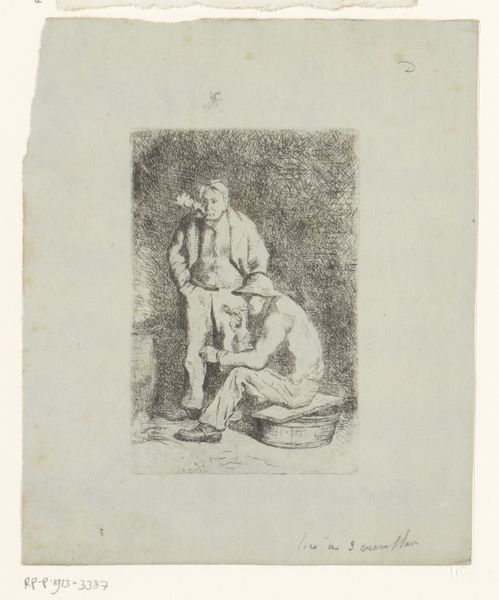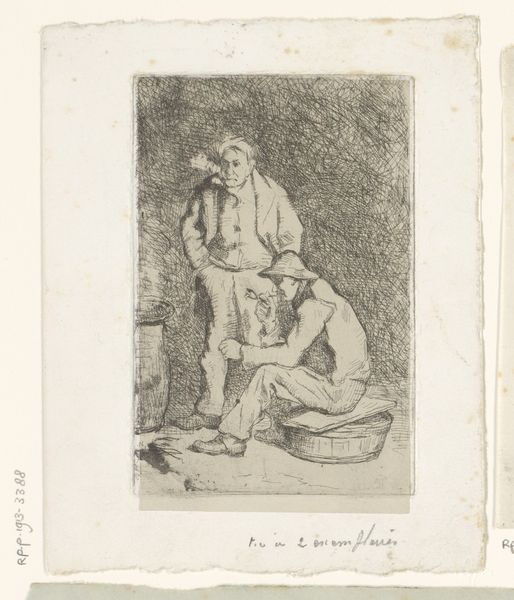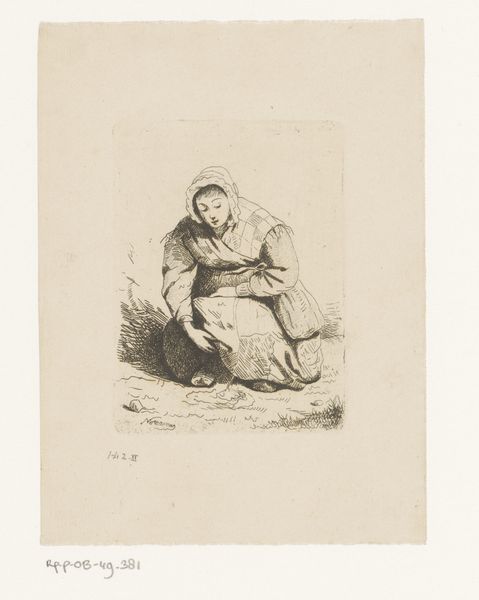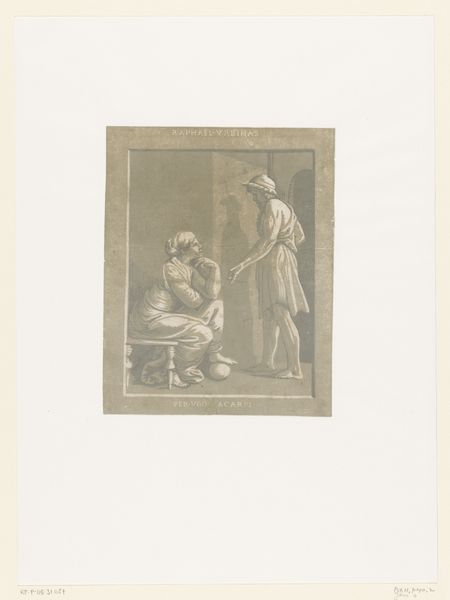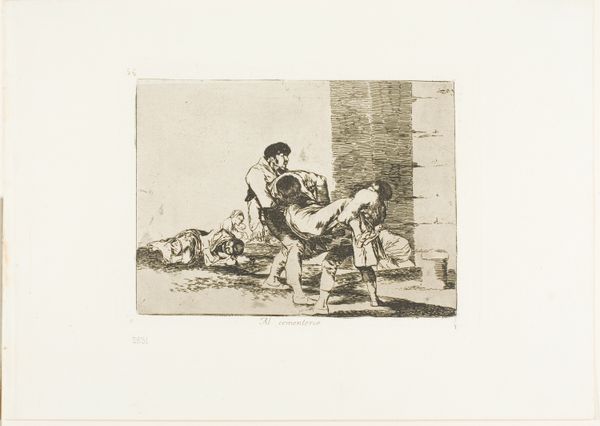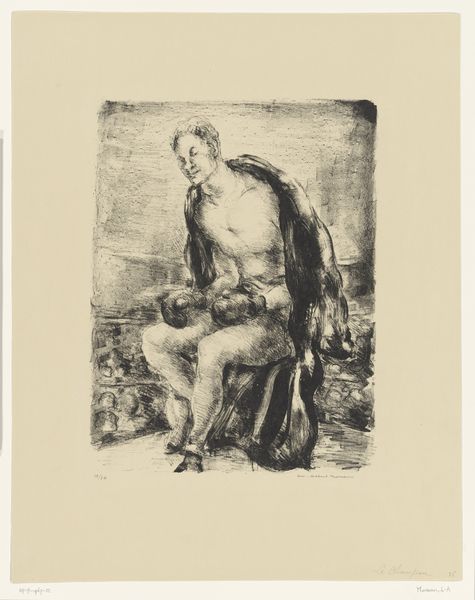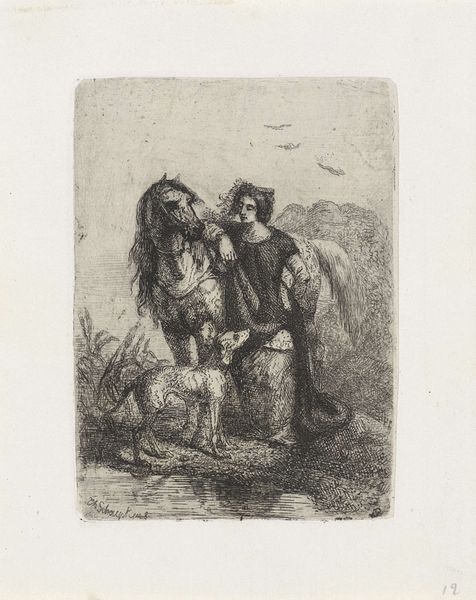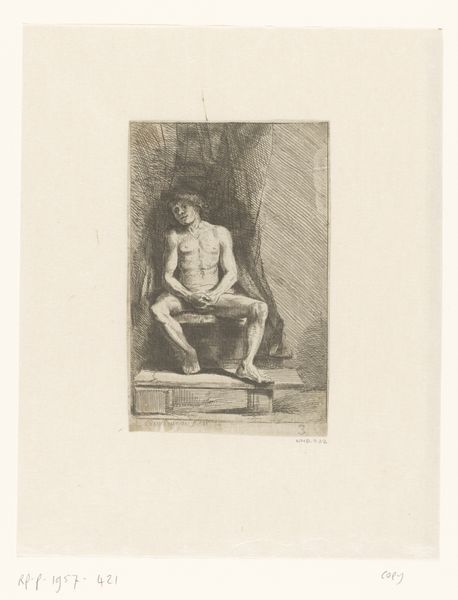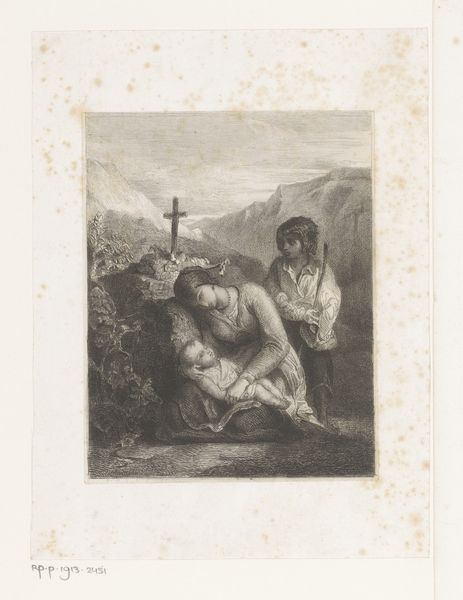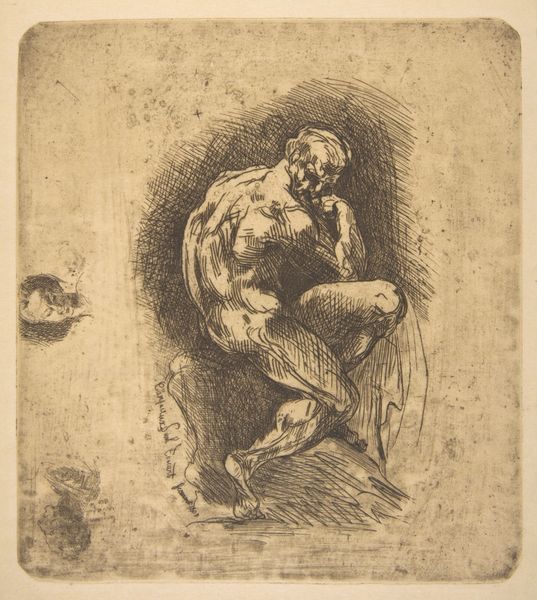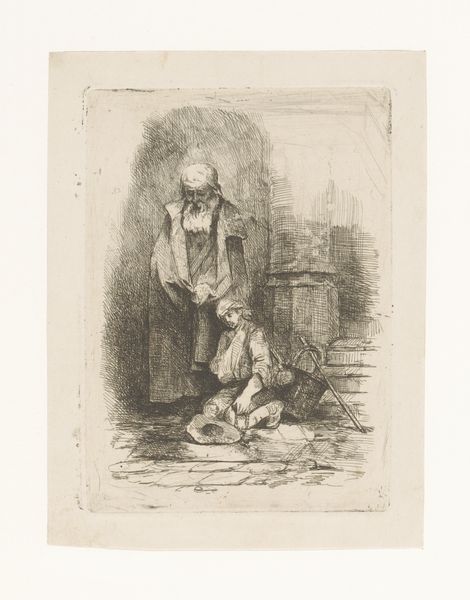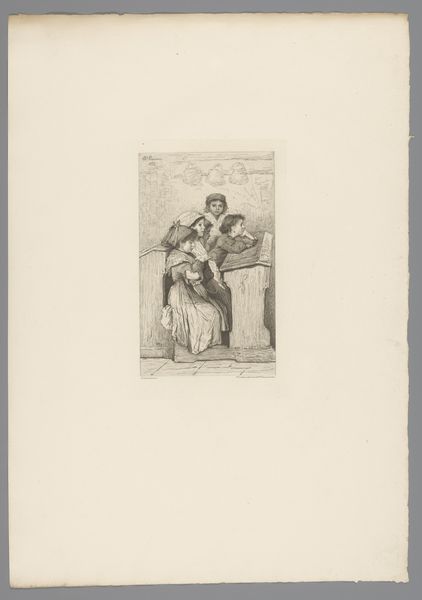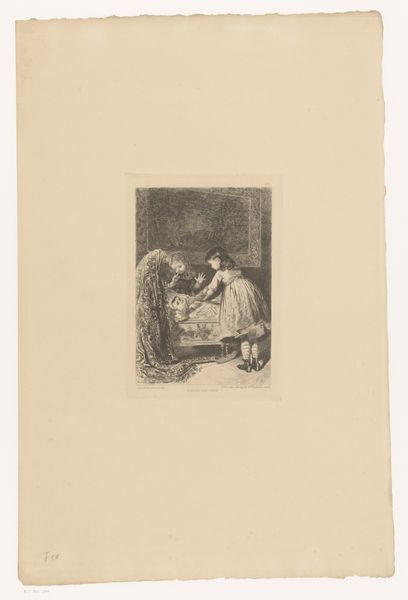
drawing, paper, ink
#
portrait
#
drawing
#
figuration
#
paper
#
ink
#
genre-painting
Dimensions: height 119 mm, width 80 mm
Copyright: Rijks Museum: Open Domain
Curator: This drawing, "Twee rokende mannen" or "Two Smoking Men", was completed by Piet Verhaert in 1877. Crafted with ink on paper, it offers an intimate glimpse into the everyday lives of working-class men. Editor: It strikes me as intimate, definitely, but also shadowed. The hatching creates a sense of enclosure, like they are stuck indoors waiting out some sort of work stoppage or bad weather. A kind of contemplative somberness seems to fill the scene. Curator: I agree that there is that pensive attitude. Verhaert lived and worked during a period of social and economic upheaval. We could think about it as a post industrial revolution scene where these men seek refuge. There is a definite theme of alienation and of the working man who lacks any control in these shifts. Editor: Indeed. Visually, the pipe carries such a charged symbolism here. It is a recurring object of familiarity and community, even resistance. Think of how pipes were adopted by the Surrealists who questioned and disrupted traditional societal norms, and became an important symbol in modern art and popular culture. Curator: Precisely! This is also about masculinity. This resonates especially as many forms of work available at the time excluded many people. In their down time, there is still this space, albeit interior, where men still held certain agency through actions as simple as smoking. This has heavy connotations when talking about labour movements and unions. Editor: It reminds us that objects hold memory and identity; Verhaert’s attention to detail—the hat of one figure, the shared posture—imbues a strong emotional link to our collective idea of the industrial class during the period. Curator: Thank you for providing us with a new look into how this simple genre painting highlights a complex period of identity politics for working class men during periods of alienation. Editor: A worthwhile reminder of how much our cultural context shapes what we read in art. Thanks for shedding more light on this poignant piece.
Comments
No comments
Be the first to comment and join the conversation on the ultimate creative platform.
